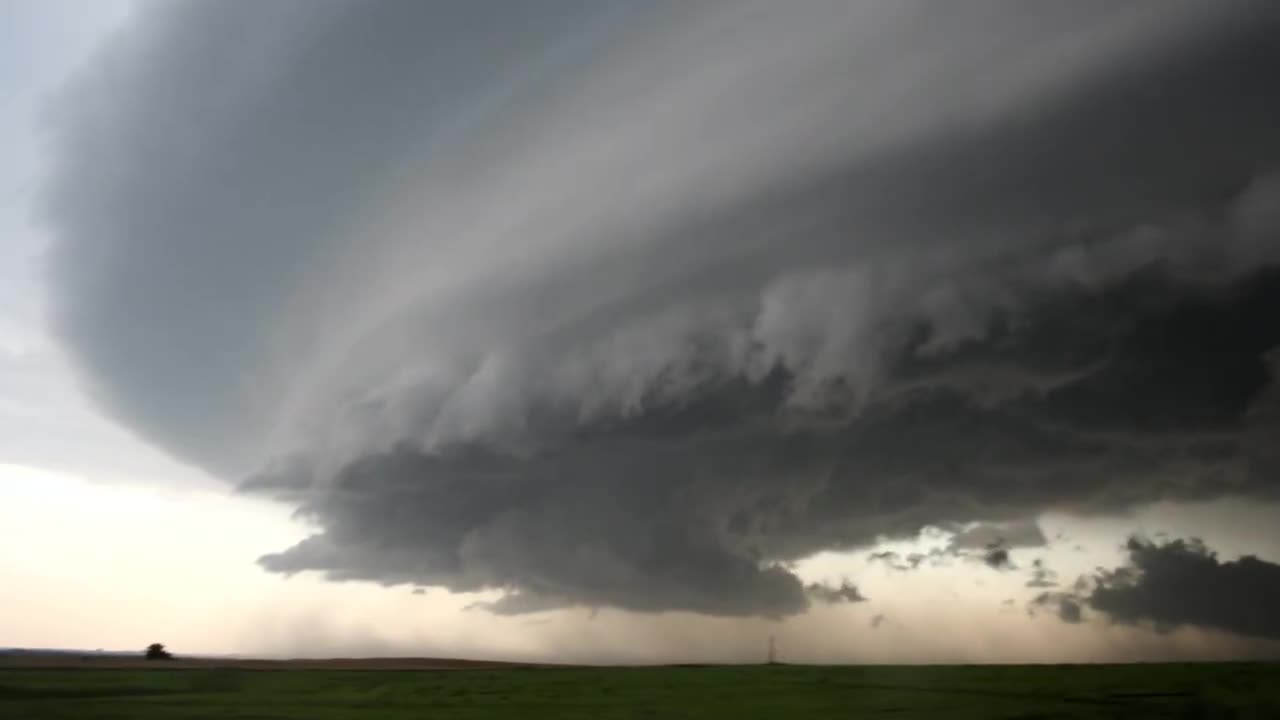Premium Only Content

Thunderstorm Types - Meteorology - Weather
Single cell:
These are short lived, and while hail and gusty wind can develop, they are typically not severe. Like all thunderstorms, these can still produce dangerous lightning.
Multi-cell cluster:
These form in clusters with numerous cells that merge together. Their speed can make a difference in the amount of rain an area receives, and they occasionally produce large hail and damaging wind.
Squall line:
A multi-cell line that can extend for hundreds of miles. These can persist for many hours and produce damaging winds and hail.
Supercell:
These powerful storms responsible for most tornadoes in the US. They also produce extreme winds, flash flooding, and very large hailstones.
This video includes footage from:
Author: Grahame Kelaher
Author webpage: https://vimeo.com/user16504279
Licence: ATTRIBUTION LICENSE 3.0 (http://creativecommons.org/licenses/b...)
Downloaded at Mazwai.com
thunderstorm, also known as an electrical storm or a lightning storm, is a storm characterized by the presence of lightning and its acoustic effect on the Earth's atmosphere, known as thunder. Relatively weak thunderstorms are sometimes called thundershowers. Thunderstorms occur in a type of cloud known as a cumulonimbus. They are usually accompanied by strong winds[1] and often produce heavy rain[1] and sometimes snow, sleet, or hail,[1] but some thunderstorms produce little precipitation or no precipitation at all. Thunderstorms may line up in a series or become a rainband, known as a squall line. Strong or severe thunderstorms include some of the most dangerous weather phenomena, including large hail, strong winds, and tornadoes. Some of the most persistent severe thunderstorms, known as supercells, rotate as do cyclones. While most thunderstorms move with the mean wind flow through the layer of the troposphere that they occupy, vertical wind shear sometimes causes a deviation in their course at a right angle to the wind shear direction
Many hazardous weather events are associated with thunderstorms. Under the right conditions, rainfall from thunderstorms causes flash flooding, killing more people each year than hurricanes, tornadoes or lightning. Lightning is responsible for many fires around the world each year, and causes fatalities. Hail up to the size of softballs damages cars and windows, and kills livestock caught out in the open. Strong (up to more than 120 mph) straight-line winds associated with thunderstorms knock down trees, power lines and mobile homes. Tornadoes (with winds up to about 300 mph) can destroy all but the best-built man-made structures.
Where are severe thunderstorms most common?
The greatest severe weather threat in the U.S. extends from Texas to southern Minnesota. But, no place in the United States is completely safe from the threat of severe weather.
What is the difference between a Severe Thunderstorm WATCH and a Severe Thunderstorm WARNING?
A Severe Thunderstorm WATCH is issued by the NOAA Storm Prediction Center meteorologists who are watching the weather 24/7 across the entire U.S. for weather conditions that are favorable for severe thunderstorms. A watch can cover parts of a state or several states. Watch and prepare for severe weather and stay tuned to NOAA Weather Radio to know when warnings are issued.
A Severe Thunderstorm WARNING is issued by your local NOAA National Weather Service Forecast Office meteorologists who watch a designated area 24/7 for severe weather that has been reported by spotters or indicated by radar. Warnings mean there is a serious threat to life and property to those in the path of the storm. ACT now to find safe shelter! A warning can cover parts of counties or several counties in the path of danger.
More Meteorology Videos
https://rumble.com/playlists/JfAj918PQuc
-
 0:47
0:47
Earth Wind and Fire
1 month agoFamily in Gary, Indiana pulls dog from cage moments before it was destroyed by a tornado
2691 -
 1:00:58
1:00:58
Stephen Gardner
2 hours ago🔥THIS 9/11 Evidence Puts My Life At Risk - New Investigation Needed NOW!
18.2K11 -
 1:03:56
1:03:56
Jeff Ahern
1 hour agoThursday thrash with Jeff Ahern
2.29K -
 LIVE
LIVE
StoneMountain64
3 hours agoKar98k Optic IS BACK after HDR Nerf 😭
166 watching -
 LIVE
LIVE
The HotSeat
55 minutes agoGulf of America CONFIRMED — Hakeem Jeffries Throws a Fit + Joe Biden Embarrasses Himself on The View
549 watching -
 27:33
27:33
Economic War Room
2 hours agoUnlocking Success: The Kingdom System | Guest: Charlie Lewis | Ep 344
55 -
 1:47:03
1:47:03
Russell Brand
4 hours agoJews, Gorillas and Kanye West: DARK RUSSELL THURSDAY – SF580
121K17 -
 44:36
44:36
Sean Unpaved
3 hours agoGridiron Goverance & Future Stars: Fixing CFB, Flagg's Pro Potential & Brady's Raiders QB Impact
35.6K1 -
 28:40
28:40
CryptoWendyO
2 hours ago $1.09 earnedBitcoin BULLRUN is back (WHAT YOU NEED TO KNOW)
26.4K1 -
 1:04:29
1:04:29
TheAlecLaceShow
4 hours agoTrump Makes Major Trade Deal with UK | FBI’s Historic Bust | Guest: Jim Pfaff | The Alec Lace Show
29K3